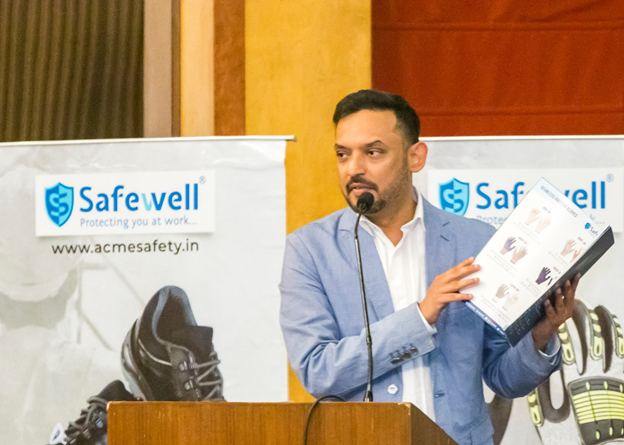|

Interviewed by Adeesh Sharma
What are the pre-requisites for safety managers before they conduct a workplace safety audit?
Step One - One week prior to the audit, inform all affected managers and supervisors. They should be directed to have all records, documents and procedures available when the audits starts.
Step Two - Review all past program area audits and corrective action recommendations.
Step Three - Review all company, local, state and federal requirements for the specific program. Become familiar with the document, inspection and training requirements.
Step Four - Determine the scope of the audit. This can be based on accident and inspection reports and input from various managers. Set a start and stop time & date for the audit.
What are some of the key points that you would like to convey to employees as part of an Occupational Safety Communication Program?
- Methods and observations that may be used to detect the presence or release of a hazardous chemical in the work area;
- Measures employees can take to protect themselves from these hazards; and
- Details of the hazard communication program developed by the employer, including an explanation of the labels received on shipped containers and the workplace labeling system used by their employer; the SDS, and how employees can obtain and use the appropriate hazard information.
How would you address non-compliance to safety norms among employees?
I will write a warning letter for the non-compliance. An example will is given below:
Sir,
We have been informed that the work which is assigned to you have several violations as you know at the time of contract we have provided you with the requirements that must be fulfilled. But you are not properly following those rules.
So this is to make sure that if you will not follow all the rules for the safety of labor we will renew the contract with the other people who have better norms for the labor. As the government officials are concerned about the health and safety for the labor. So it’s a request that if the necessities are not fulfilled till tomorrow then we will seize your work
Thanks
Please tell us about a key moment in your career where you wish you had handled a safety incident differently.
Be prepared to mention any steps you took to upgrade your skills, increase your knowledge base, or modify counterproductive behaviors. Turn your weakness into a learning opportunity, and share the ways you gained new skills for problem-solving. Maybe you have taken a workshop or sought out advice from a mentor. The reason you would have done it differently now is that you look the initiative to learn how to handle a difficult situation to get a positive outcome.
For example, you might have had an early experience as a manager when you allowed an individual with a negative personality to interfere with the group dynamics of your team. If in a subsequent management experience you took an assertive approach by coaching a similar employee to change his behavior (or leave the unit), then you might reference the initial incident as something you would have done differently. You can give examples of how the first experience showed you the consequences of allowing the employee’s behavior to erode the team morale, inspiring you to expand your skills so you were able to put a stop to the issue before it became a problem the next time.
Given your subsequent experience, you can say that you did handle it differently later on, and alleviate any concern the employer might have about your toughness or assertiveness as a manager. If you consulted Human Resources, attended a workshop on handling difficult employees, or employed another strategy to address the weakness, then you should surely mention the specific steps you took to enable your improved response.
| 



